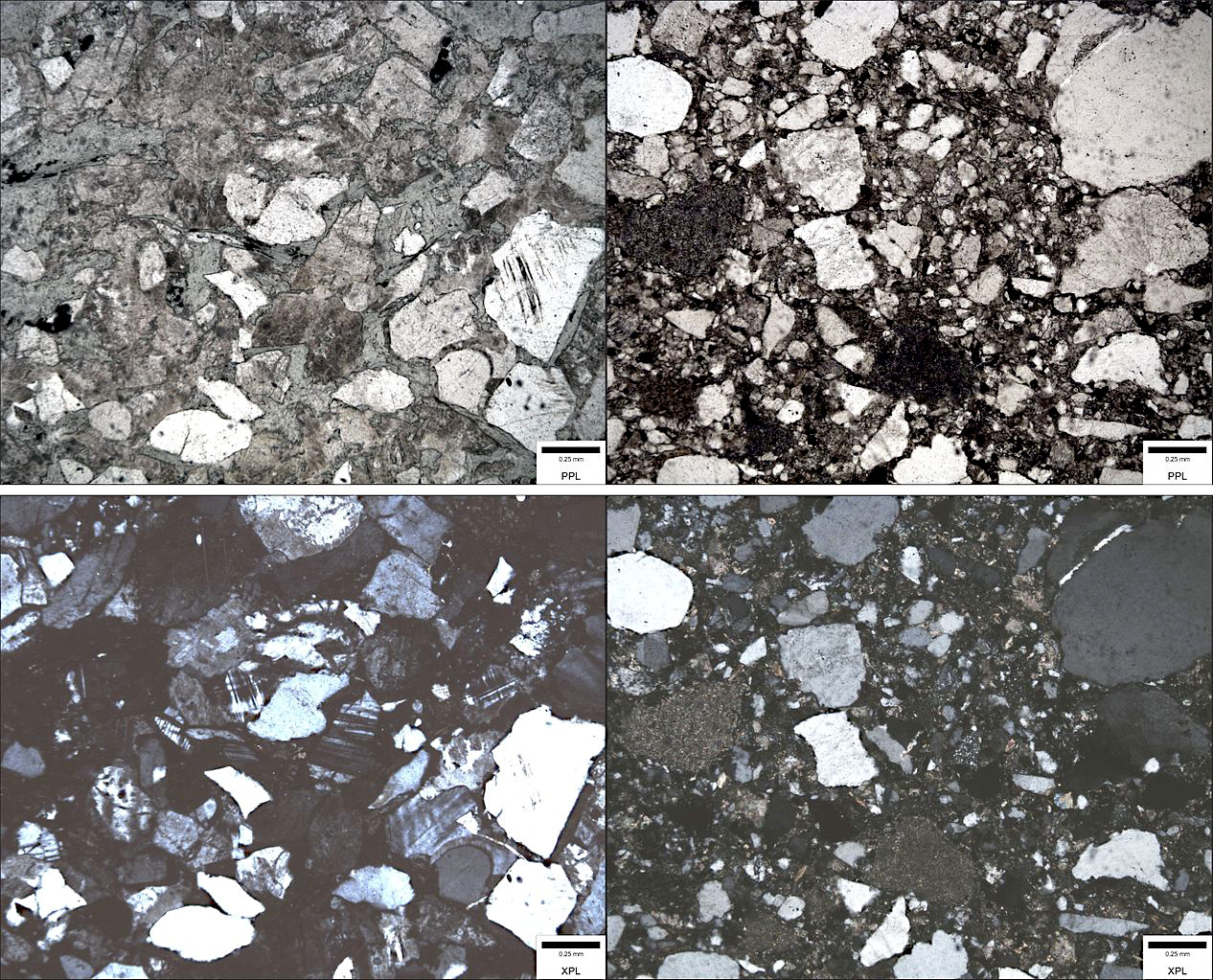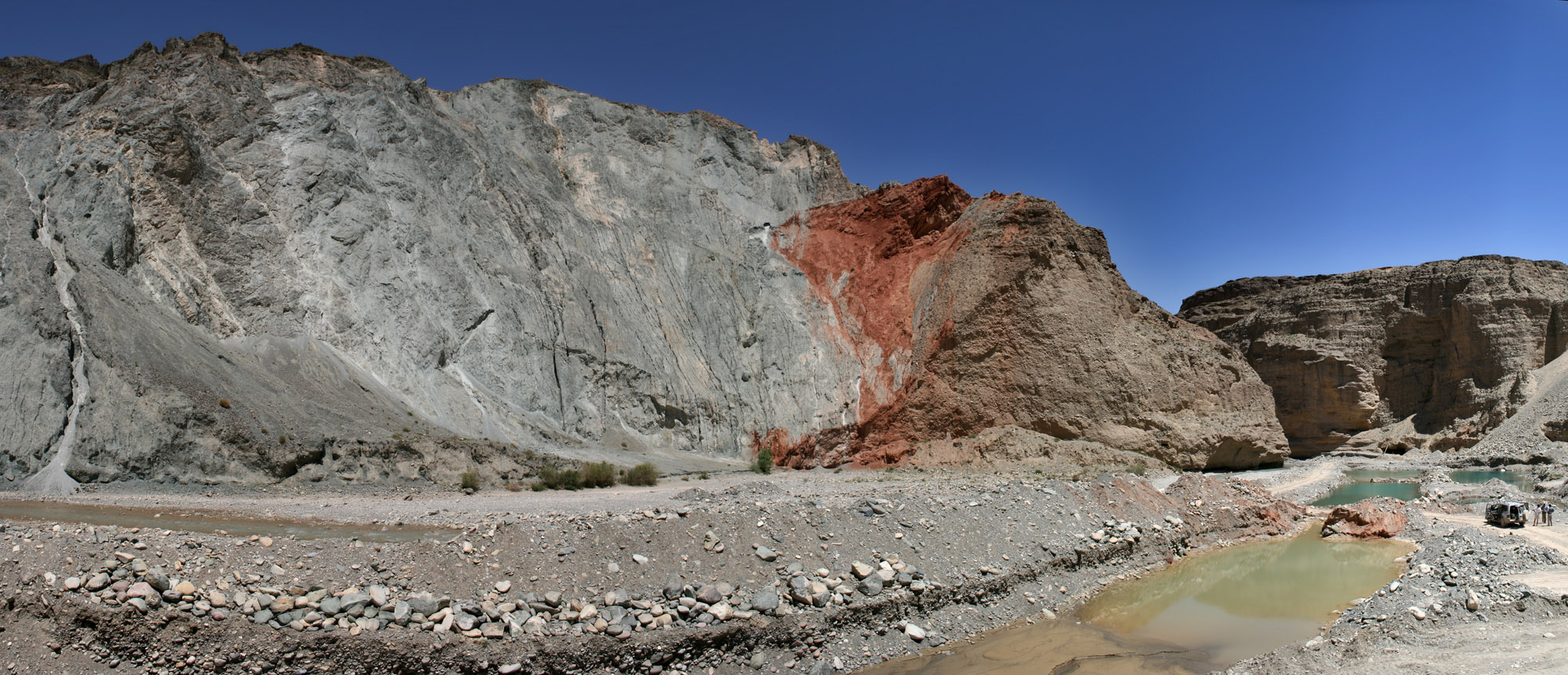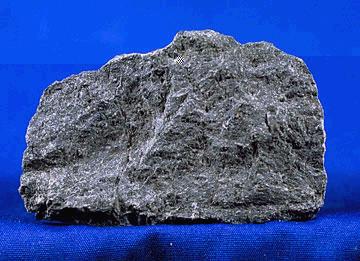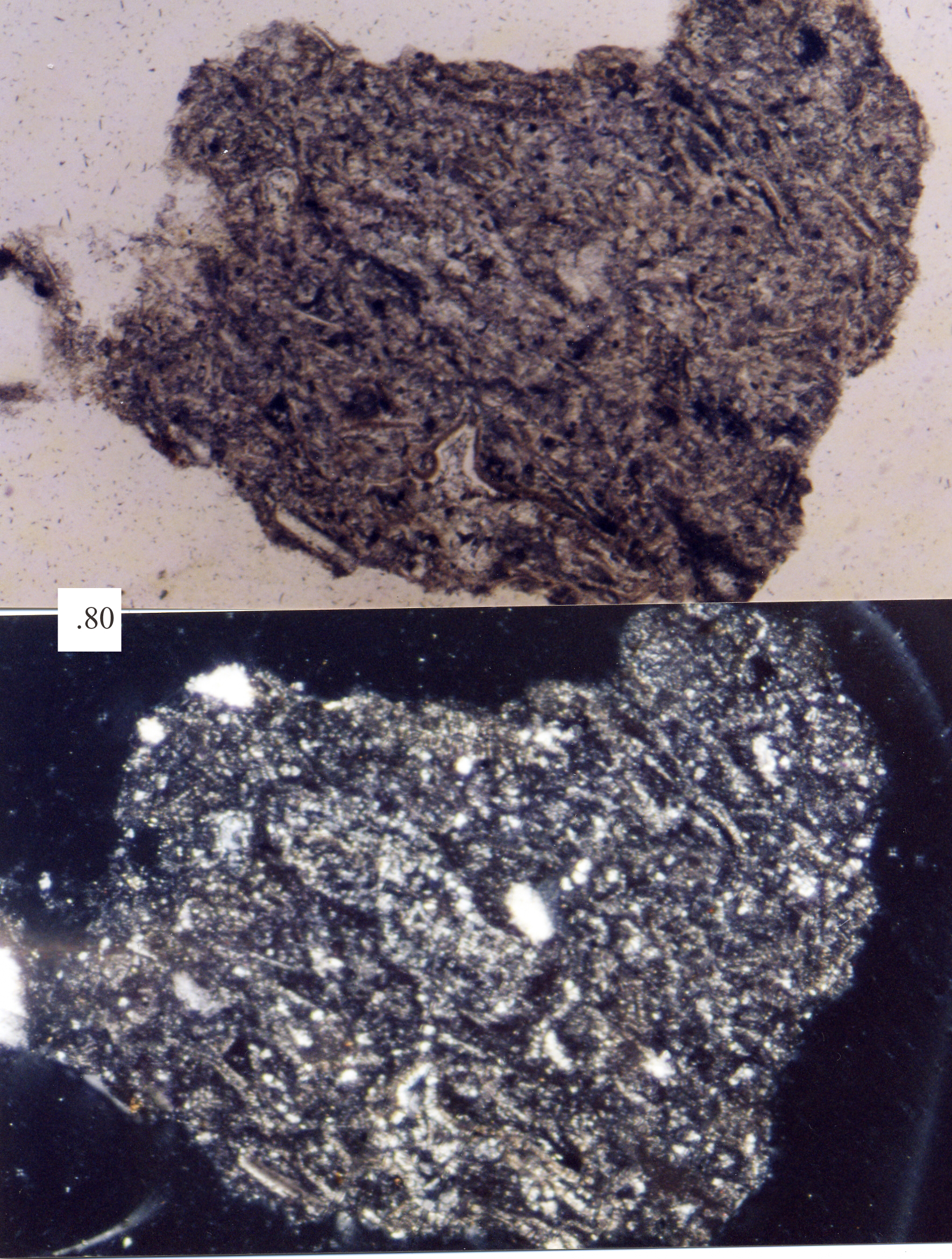|
Greywacke Zone
The greywacke zone is a band of Paleozoic metamorphosed sedimentary rocks that forms an east-west band through the Austrian Alps. The greywacke zone crops out between the Mesozoic rocks of the Northern Calcareous Alps and the Austroalpine and Penninic basement rocks of the Central Eastern Alps. Stratigraphically, the greywacke zone can be up to thick. The zone is part of the Austroalpine nappes. Mesozoic limestones crop out north of the greywacke zone, forming the Northern Calcareous Alps. South of the zone, basement rocks of the Austroalpine and Penninic nappes form the Central Eastern Alps. Composition The lithologies of the greywacke zone are: *Paleozoic turbidites (among them greywackes) and limestones of Ordovician to Devonian age; and *felsic and mafic volcanic rocks of Ordovician age. Formation The rocks were formed at a passive margin of the Paleo-Tethys Ocean, when the Austroalpine terrain was part of the micro-continent Avalonia. Together with the other Austroalp ... [...More Info...] [...Related Items...] OR: [Wikipedia] [Google] [Baidu] |
Paleozoic
The Paleozoic ( , , ; or Palaeozoic) Era is the first of three Era (geology), geological eras of the Phanerozoic Eon. Beginning 538.8 million years ago (Ma), it succeeds the Neoproterozoic (the last era of the Proterozoic Eon) and ends 251.9 Ma at the start of the Mesozoic Era. The Paleozoic is subdivided into six period (geology), geologic periods (from oldest to youngest), Cambrian, Ordovician, Silurian, Devonian, Carboniferous and Permian. Some geological timescales divide the Paleozoic informally into early and late sub-eras: the Early Paleozoic consisting of the Cambrian, Ordovician and Silurian; the Late Paleozoic consisting of the Devonian, Carboniferous and Permian. The name ''Paleozoic'' was first used by Adam Sedgwick (1785–1873) in 1838 to describe the Cambrian and Ordovician periods. It was redefined by John Phillips (geologist), John Phillips (1800–1874) in 1840 to cover the Cambrian to Permian periods. It is derived from the Ancient Greek, Greek ''palaiós'' (π� ... [...More Info...] [...Related Items...] OR: [Wikipedia] [Google] [Baidu] |
Greywacke
Greywacke or graywacke ( ) is a variety of sandstone generally characterized by its hardness (6–7 on Mohs scale), dark color, and Sorting (sediment), poorly sorted angular grains of quartz, feldspar, and small rock fragments or sand-size Lithic fragment (geology), lithic fragments set in a compact, clay-fine matrix. It is a texturally immature sedimentary rock generally found in Paleozoic Stratum, strata. The larger Particle size (grain size), grains can be sand- to gravel-sized, and Matrix (geology), matrix materials generally constitute more than 15% of the rock by volume. Formation The origin of greywacke was unknown until turbidity currents and turbidites were understood, since, according to the normal laws of sedimentation, gravel, sand and mud should not be laid down together. Geologists now attribute its formation to submarine avalanches or strong turbidity currents. These actions churn sediment and cause mixed-sediment slurries, in which the resulting deposits may ex ... [...More Info...] [...Related Items...] OR: [Wikipedia] [Google] [Baidu] |
Greywacke Zone
The greywacke zone is a band of Paleozoic metamorphosed sedimentary rocks that forms an east-west band through the Austrian Alps. The greywacke zone crops out between the Mesozoic rocks of the Northern Calcareous Alps and the Austroalpine and Penninic basement rocks of the Central Eastern Alps. Stratigraphically, the greywacke zone can be up to thick. The zone is part of the Austroalpine nappes. Mesozoic limestones crop out north of the greywacke zone, forming the Northern Calcareous Alps. South of the zone, basement rocks of the Austroalpine and Penninic nappes form the Central Eastern Alps. Composition The lithologies of the greywacke zone are: *Paleozoic turbidites (among them greywackes) and limestones of Ordovician to Devonian age; and *felsic and mafic volcanic rocks of Ordovician age. Formation The rocks were formed at a passive margin of the Paleo-Tethys Ocean, when the Austroalpine terrain was part of the micro-continent Avalonia. Together with the other Austroalp ... [...More Info...] [...Related Items...] OR: [Wikipedia] [Google] [Baidu] |
Alpine Orogeny
The Alpine orogeny, sometimes referred to as the Alpide orogeny, is an orogenic phase in the Late Mesozoic and the current Cenozoic which has formed the mountain ranges of the Alpide belt. Cause The Alpine orogeny was caused by the African continent, the Arabian Peninsula, the Indian subcontinent, and the Cimmerian plate colliding with Eurasia in the north. Convergent movements between the African, Arabian and Indian plates from the south, and the Eurasian plate and the Anatolian sub-plate from the north – as well as many smaller (micro)plates – had already begun during the early Cretaceous, but the major phases of mountain building began during the Paleocene to the Eocene. The process continues currently in some of the Alpide mountain ranges. The Alpine orogeny is considered one of the three major phases of orogeny in Europe that define the geology of that continent, along with the Caledonian orogeny that formed the Old Red Sandstone Continent when the continents ... [...More Info...] [...Related Items...] OR: [Wikipedia] [Google] [Baidu] |
Thrust Fault
A thrust fault is a break in the Earth's crust, across which older rocks are pushed above younger rocks. Thrust geometry and nomenclature Reverse faults A thrust fault is a type of reverse fault that has a dip of 45 degrees or less. If the angle of the fault plane is lower (often less than 15 degrees from the horizontal) and the displacement of the overlying block is large (often in the kilometer range) the fault is called an ''overthrust'' or ''overthrust fault''. Erosion can remove part of the overlying block, creating a ''fenster'' (or ''window'') – when the underlying block is exposed only in a relatively small area. When erosion removes most of the overlying block, leaving island-like remnants resting on the lower block, the remnants are called ''klippen'' (singular '' klippe''). Blind thrust faults If the fault plane terminates before it reaches the Earth's surface, it is called a ''blind thrust'' fault. Because of the lack of surface evidence, blind thrust fa ... [...More Info...] [...Related Items...] OR: [Wikipedia] [Google] [Baidu] |
Avalonia
Avalonia was a microcontinent in the Paleozoic era. Crustal fragments of this former microcontinent are terranes in parts of the eastern coast of North America: Atlantic Canada, and parts of the East Coast of the United States, East Coast of the United States. In addition, terranes derived from Avalonia also make up portions of Northwestern Europe, being found in England, Wales and parts of Ireland. Avalonia developed as a volcanic arc on the northern margin of Gondwana. It eventually rifted off, becoming a drifting microcontinent. The Rheic Ocean formed behind it, and the Iapetus Ocean shrank in front. It collided with the continents Baltica, then Laurentia. The Armorican terrane, Armorican Terrane assemblage collided with the merged Baltica/Avalonia during the formation of Pangea. When Pangea broke up, Avalonia's remains were divided by the rift which became the Atlantic Ocean. Avalonia is named for the Avalon Peninsula in Newfoundland (island), Newfoundland. When the term "A ... [...More Info...] [...Related Items...] OR: [Wikipedia] [Google] [Baidu] |
Paleo-Tethys Ocean
The Paleo-Tethys or Palaeo-Tethys Ocean was an ocean located along the northern margin of the paleocontinent Gondwana that started to open during the Middle Cambrian, grew throughout the Paleozoic, and finally closed during the Late Triassic; existing for about 400 million years. Paleo-Tethys was a precursor to the Tethys Ocean (also called the Neo-Tethys), which was located between Gondwana and the Hunic terranes (continental fragments that broke off Gondwana and moved north). It opened as the Proto-Tethys Ocean subducted under these terranes and closed as the Cimmerian terranes (that also broke-off Gondwana and moved north) gave way to the Tethys Ocean. Confusingly, the Neo-Tethys is sometimes defined as the ocean south of a hypothesized mid-ocean ridge separating Greater India from Asia, in which case the ocean between Cimmeria and this hypothesized ridge is called the Meso-Tethys, i.e., the "Middle-Tethys". The so-called Hunic terranes are divided into the ''European H ... [...More Info...] [...Related Items...] OR: [Wikipedia] [Google] [Baidu] |
Passive Margin
A passive margin is the transition between Lithosphere#Oceanic lithosphere, oceanic and Lithosphere#Continental lithosphere, continental lithosphere that is not an active plate continental margin, margin. A passive margin forms by sedimentation above an ancient rift, now marked by transitional lithosphere. Continental rifting forms new ocean basins. Eventually the continental rift forms a mid-ocean ridge and the locus of extensional tectonics, extension moves away from the continent-ocean boundary. The transition between the continental and oceanic lithosphere that was originally formed by rifting is known as a passive margin. Global distribution Passive margins are found at every ocean and continent boundary that is not marked by a Fault (geology)#Strike-slip faults, strike-slip fault or a subduction, subduction zone. Passive margins define the region around the Arctic Ocean, Atlantic Ocean, and western Indian Ocean, and define the entire coasts of Africa, Australia, Greenla ... [...More Info...] [...Related Items...] OR: [Wikipedia] [Google] [Baidu] |
Volcanic Rock
Volcanic rocks (often shortened to volcanics in scientific contexts) are rocks formed from lava erupted from a volcano. Like all rock types, the concept of volcanic rock is artificial, and in nature volcanic rocks grade into hypabyssal and metamorphic rocks and constitute an important element of some sediments and sedimentary rocks. For these reasons, in geology, volcanics and shallow hypabyssal rocks are not always treated as distinct. In the context of Precambrian shield geology, the term "volcanic" is often applied to what are strictly metavolcanic rocks. Volcanic rocks and sediment that form from magma erupted into the air are called "pyroclastics," and these are also technically sedimentary rocks. Volcanic rocks are among the most common rock types on Earth's surface, particularly in the oceans. On land, they are very common at plate boundaries and in flood basalt provinces. It has been estimated that volcanic rocks cover about 8% of the Earth's current land surface. ... [...More Info...] [...Related Items...] OR: [Wikipedia] [Google] [Baidu] |
Mafic
A mafic mineral or rock is a silicate mineral or igneous rock rich in magnesium and iron. Most mafic minerals are dark in color, and common rock-forming mafic minerals include olivine, pyroxene, amphibole, and biotite. Common mafic rocks include basalt, diabase and gabbro. Mafic rocks often also contain calcium-rich varieties of plagioclase feldspar. Mafic materials can also be described as ferromagnesian. History The term ''mafic'' is a portmanteau of "magnesium" and "ferric" and was coined by Charles Whitman Cross, Joseph P. Iddings, Louis V. Pirsson, and Henry Stephens Washington in 1912. Cross' group had previously divided the major rock-forming minerals found in igneous rocks into ''salic'' minerals, such as quartz, feldspars, or feldspathoids, and ''femic'' minerals, such as olivine and pyroxene. However, micas and aluminium-rich amphiboles were excluded, while some calcium minerals containing little iron or magnesium, such as wollastonite or apatite, were included in t ... [...More Info...] [...Related Items...] OR: [Wikipedia] [Google] [Baidu] |
Felsic
In geology, felsic is a grammatical modifier, modifier describing igneous rocks that are relatively rich in elements that form feldspar and quartz.Marshak, Stephen, 2009, ''Essentials of Geology,'' W. W. Norton & Company, 3rd ed. It is contrasted with mafic rocks, which are richer in magnesium and iron. Felsic refers to silicate minerals, magma, and rock (geology), rocks which are enriched in the lighter elements such as silicon, oxygen, aluminium, sodium, and potassium. Molten felsic magma and lava is more viscosity, viscous than molten mafic magma and lava. Felsic magmas and lavas have lower temperatures of melting and solidification than mafic magmas and lavas. Felsic rocks are usually light in color and have specific gravity, specific gravities less than 3. The most common felsic rock is granite. Common felsic minerals include quartz, muscovite, orthoclase, and the sodium-rich plagioclase feldspars (albite-rich). Terminology Acid rock In modern usage, the term ''acid rock ... [...More Info...] [...Related Items...] OR: [Wikipedia] [Google] [Baidu] |








